#desert beetle
Text
just a lil blueberry out for an evening stroll <3
#coleoptera#entomology#insects#exotic pets#invertebrates#pet bug#pet insect#bugs#beetles#death feigning beetle#blue death feigning beetle#bdfb#beetle#desert beetle#darkling beetle#cute bug#bugblr
1K notes
·
View notes
Text
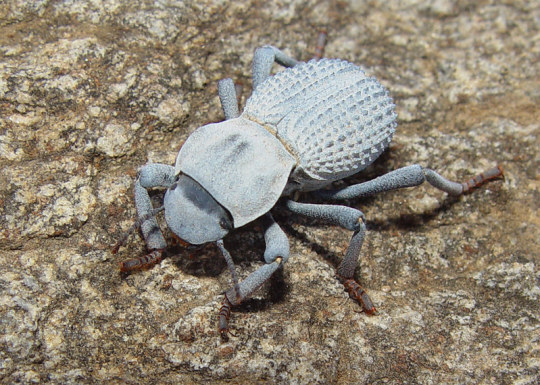
A blue death-feigning beetle, or desert ironclad beetle (Asbolus verrucosus) in California, USA
by Robyn Waayers
#i have 3 of these#they're the best#desert ironclad beetle#blue death feigning beetle#beetles#asbolus verrucosus#asbolus#Tenebrionidae#coleoptera#insecta#arthropoda#wildlife: california#wildlife: usa#wildlife: north america
323 notes
·
View notes
Text
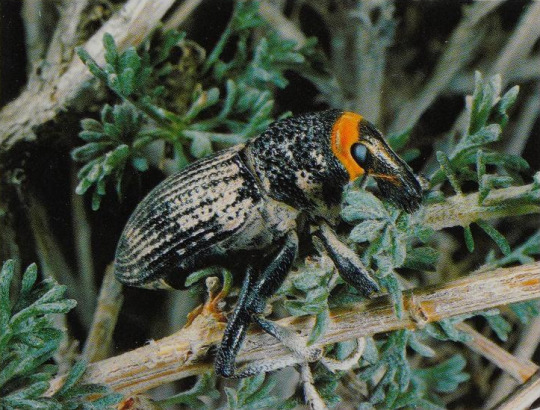
Desert weevil
By: Oxford Scientific Films
From: Wildlife of the Deserts
1980
#weevil#beetle#insect#arthropod#invertebrate#1980#1980s#Oxford Scientific Films#Wildlife of the Deserts (1980)
112 notes
·
View notes
Text

Scarabax
A simple bug from a simple desert.
Source
Creator: FeroxJ
#lego#bionicle#armor#natural armor#animal#animal shape#insect#insectoid#beetle#scarab#scarabax#bara magna#bricks#mandible#green eyes#multiple limbs#multiple legs#eyes#green#desert
125 notes
·
View notes
Text
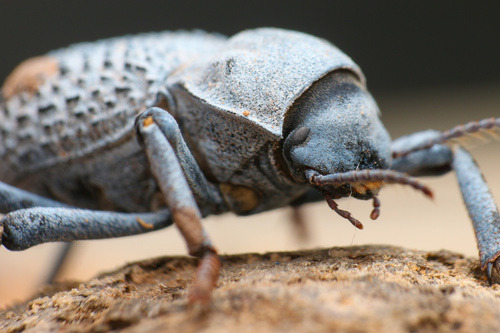
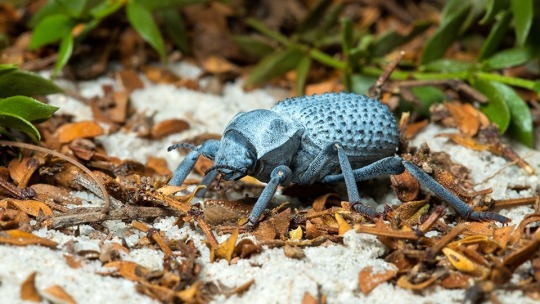
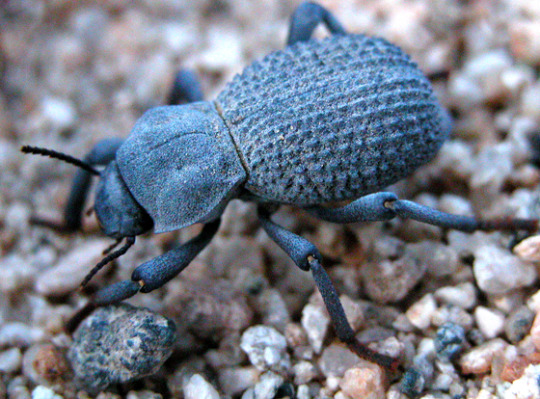
RIP: The Blue Death-Feigning Beetle
Also known as the desert ironclad beetle, the blue death-feigning beetle (Asbolus verrucosus) is a species of darkling beetle native to the Mojave and Sonoran deserts of the southwestern United States and Northern Mexico. Within this environment, the desert ironclad beetle can often be found near vegetation like sagebrush or palo verde trees, or hiding under fallen logs or rocks. However, it's not uncommon to spot it trundling along out in the open.
While the blue death-feigning beetle's coloring might make it stand out against the dull desert background, it actually serves a useful purpose. The color is a result of a heavy coating of wax that covers the beetle's body; this wax helps reduce evaporation and preserves precious moisture. It also helps that A. verrucosus is a small species, no more than 8–21 mm (0.71–0.83 in), and as they are most active at dawn and dusk they are easy to overlook. Males and females are virtually identical; the most reliable way to tell the difference is by the antennae, as males have long bristles on the underside while females don't.
Despite their small size-- or perhaps because of it-- desert ironclad beetles are a popular snack for many other desert dwellers, including lizards, snakes, birds, small rodents, and foxes. When threatened, blue death-feinging beetles live up to their name: they drop to the ground, roll onto their backs and play dead. This state can last anywhere from a few seconds to 45 minutes. Once the predator is gone, they are able to use their long legs to easily right themselves and continue with their business. Like most other darkling beetles, this species is an omnivorous scavenger, feeding on dead insects, fruits, lichen, and other plant matter.
The desert ironclad beetle can mate year round, given optimal conditions such as good rainfall and plenty to eat, but they're most active during the summer months. Once a male encounters a female, he courts her by 'tickling' her back with his antennae. If she is receptive, the two mate and then part ways. The female digs a burrow and lays a clutch of eggs in moist soil, where they take 2-3 weeks to hatch. Once larvae emerge, they immedietly begin to seek out organic matter to feed on. Over the next several weeks, they can grow from 2-3 mm (0.07-0.11 in) to 50 mm (2 in)! When they get big enough the larvae burrow into rotting wood and pupate for about a month before emerging as adults. Individuals can go on to live for up to 10 years in the wild.
Conservation status: The IUCN has not evaluated the blue death-feigning beetle, but it's believed that populations are currently stable. The species' primary threat is collection for the pet trade.
If you like what I do, consider leaving a tip or buying me a ko-fi!
Photos
Mason S. via iNaturalist
Bruce D. Taubert
Hartmut Wisch
#blue death-feigning beetle#desert ironclad beetle#Coleoptera#Tenebrionidae#darkling beetles#beetles#insects#arthropods#desert arthropods#north america#southern north america#central america#animal facts#biology#zoology
145 notes
·
View notes
Photo
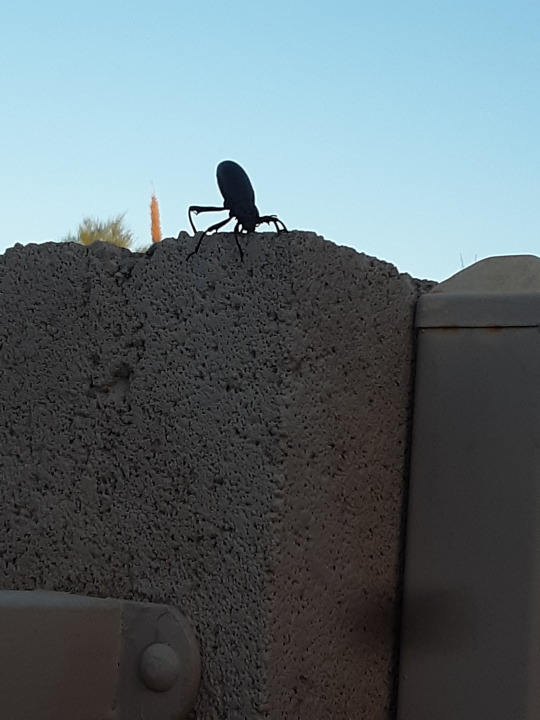
@calamitydarcy submitted: rescued this little guy from my pool!! i believe it’s a pinacate beetle! he thanked me by sticking his abdomen at me and politely warning me to leave before he stink sprayed at me lol
Yep, looks like a darkling beetle in the genus Eleodes, which are also called pinacate beetles or desert stink beetles. Glad they were rescued and still feeling feisty :)
81 notes
·
View notes
Photo
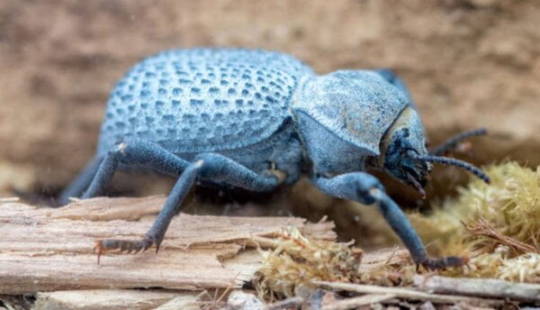
DESERT IRONCLAD BEETLE
Image by VW Pics, Universal Images Group via Getty Images
#vw pics#universal images group#getty images#insect#desert#desert ironclad beetle#beetle#animal#nature
819 notes
·
View notes
Text

Unknown beetle found near Deming, New Mexico.
Possibly genus Disonycha, a type of flea beetle.
#coleoptera#beetles#flea beetle#Disonycha#maybe#nature#bugs#nature photography#biodiversity#animals#inaturalist#arthropods#entomology#insect appreciation#insects#bugblr#new mexico#deming#desert creature#pretty colors#stripes#wildlife#bug blogging
66 notes
·
View notes
Text
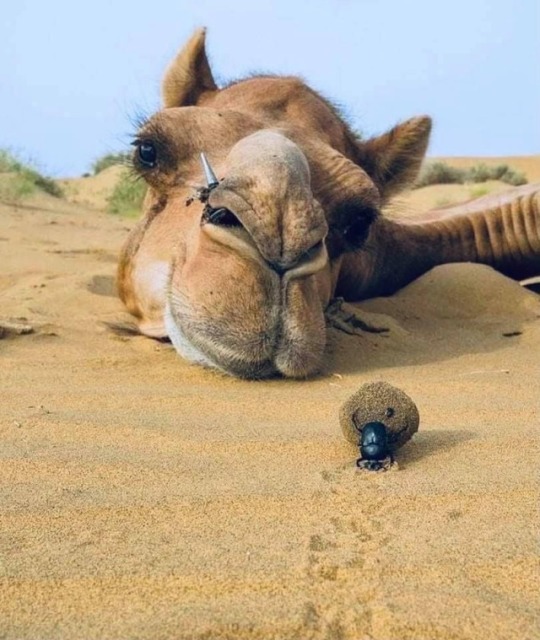
02-26-24 | maschio61. misterlemonztenth.tumblr.com/archive
37 notes
·
View notes
Text
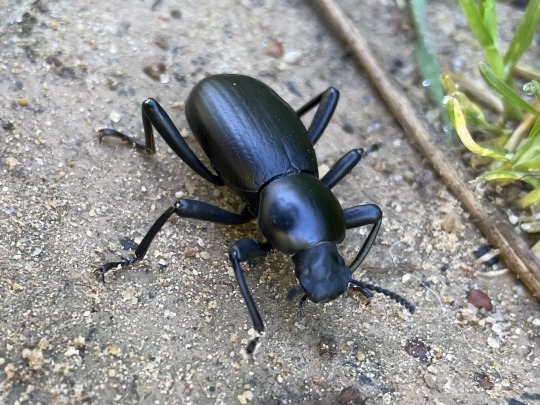
Beeble :)
#darkling beetle#i… do not know the specific kind. maybe some kinda desert stink beetle. I’m sorry I like bugs but I do not know their names#bug#bugs#insect#insects#beetle#beetles#take a walk with me
23 notes
·
View notes
Text

night skies
#mine#aesthetic#pretty#sky#blue#blue pastel#white#green#orange#yellow#blue hair#blue sargent#blue beetle#blue sky#purple#blue eyes#blue skies#desert#field#evening sky#sunrise
86 notes
·
View notes
Text
exploring! (video is sped up bc they just walk. so slowly)
#blue death feigning beetle#entomology#inverts#invertebrates#exotic pets#insects#pet insect#pet bug#beetles#coleoptera#death feigning beetle#desert beetle#darkling beetle#beetle#bugblr#trypophobia
243 notes
·
View notes
Photo
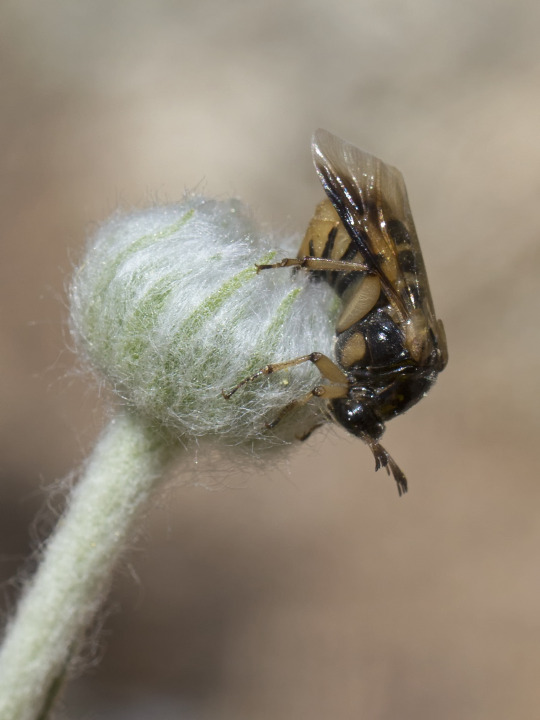
#insect#beetle#Ripiphorus rex#flower#photographers on tumblr#textless#amadee ricketts#bud#desert marigold#perky sue#laying eggs#in the yard#garden#spring#wedge-shaped beetle
60 notes
·
View notes
Text

Desert blister beetle (Lytta magister)
By: Raymond A. Mendez
From: Wildlife of the Deserts
1980
#blister beetle#beetle#insect#arthropod#invertebrate#1980#1980s#Raymond A. Mendez#Wildlife of the Deserts (1980)
59 notes
·
View notes
Note
sorry i cant get out of your head. i live in here now. its very warm
its gotta be cramped in there considering there's five frogs and a beetle in there
#two of the frogs are desert rain frogs#the other three are pumpkin toadlets#the beetle is a cyclommatus stag#did you know that pumpkin toadlets cant land correctly#they just kinda jump and awkwardly land on their side or back
9 notes
·
View notes
Text
Uncharismatic Fact of the Day
Many animals in the desert can go long periods without water, but the Namib desert beetle can drink whenever it likes. This insect has a special shell with miniscule bumps and groves that, when angled properly into the morning fog, allows it to collect dew that drips down into its mouth.

(Image: A Namib desert beetle (Stenocara gracilipes) getting a drink by Solvin Zanko)
If you like what I do, consider leaving a tip or buying me a ko-fi!
#namib desert beetle#Coleoptera#Tenebrionidae#darkling beetles#beetles#insects#arthropods#uncharismatic facts
424 notes
·
View notes